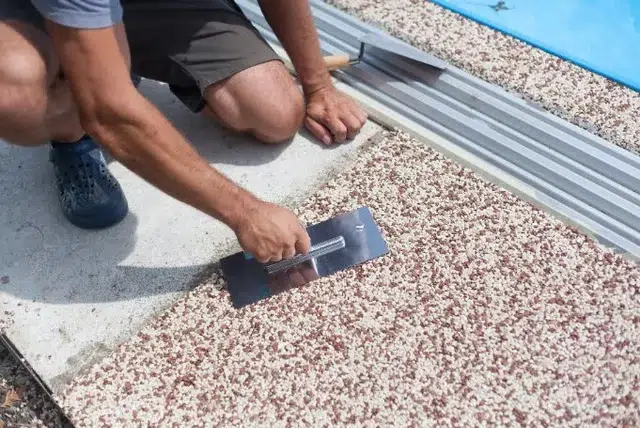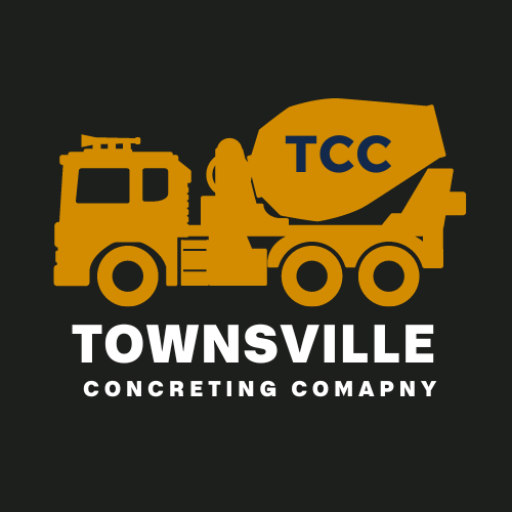Exposed Aggregate: Elevate Your Townsville Home
Exposed aggregate concrete is a popular choice for Townsville homeowners. It combines durability with a unique, stylish look, perfect for North Queensland’s climate. This comprehensive guide covers everything you need to know about exposed aggregate.
Understanding Exposed Aggregate
Exposed aggregate gets its distinctive appearance from the decorative stones revealed within the concrete mix. The process involves applying a retardant to the concrete surface, which slows the setting process of the top layer. This allows the top layer to be washed away, exposing the aggregate beneath. The size, color, and texture of these aggregates determine the final look. Larger aggregates create a bolder texture, while smaller stones offer a smoother, more refined appearance. Understanding the specifics of these options and how they interact with the environment is crucial for making the right choice for your home. More details on the pros and cons of different sizes and how they perform in Townsville’s specific climate would be beneficial.
Aggregate Types for Your Townsville Home
Several aggregate types work beautifully in Townsville homes:
- River Stones: Smooth, rounded stones offer a natural, classic look. Colors range from whites and greys to warm browns. What are the maintenance requirements for river stones in this climate?
- Crushed Granite: Angular, crushed granite provides a more textured, modern aesthetic. Available in various colors, including greys, pinks, and blues. How does the angular shape affect durability and cleaning?
- Quartz: Adds sparkle and a premium feel. Quartz aggregates come in a wide array of colors, allowing for unique and eye-catching designs. Is quartz significantly more expensive than other options? What are its long-term maintenance needs?
Cost of Exposed Aggregate
While exposed aggregate offers long-term cost savings due to its durability, the initial cost is generally higher than standard concrete. Factors influencing cost include:
- Aggregate type: Some aggregates are more expensive than others. A breakdown of the relative costs of different aggregate types would be helpful.
- Project size: Larger projects typically have a lower cost per square meter. What are the typical price breaks for different project sizes?
- Site preparation: Extensive site preparation can increase costs. What constitutes “extensive” site preparation, and what are some examples of additional costs that might be incurred?
Expect to pay between $80 and $150 per square meter for exposed aggregate, depending on these factors. A more detailed breakdown of these costs, including examples of different project scenarios, would be valuable.

Exposed Aggregate and Townsville’s Climate
Exposed aggregate thrives in North Queensland’s demanding climate. Its durability, slip-resistance, and colorfastness make it ideal for withstanding intense sun, heavy rain, and cyclones. This resilience translates to long-term cost savings, reducing the need for frequent repairs. Specific examples of how exposed aggregate performs in cyclones compared to other materials would be helpful.
Since making informed decisions about the right materials for your exposed aggregate project is crucial for its longevity, it’s helpful to have expert guidance. We offer a free consultation to discuss your specific project needs and help you choose the perfect aggregate for your Townsville home. Contact us today to schedule your free consultation.
Driveways
An exposed aggregate driveway creates a grand entrance. Choose from various colors and textures to complement your home’s style. The slip-resistant surface ensures safety for your family and guests. What are the best aggregate choices for driveways in terms of durability and traction?
Patios and Entertainment Areas
Extend your living space with an exposed aggregate patio. It’s perfect for entertaining or relaxing. The slip-resistant surface and design versatility make it an excellent choice for outdoor living. Are there specific design considerations for patios and entertainment areas using exposed aggregate?
Poolside Paradise
Exposed aggregate is a stylish and safe solution for pool surrounds. Its slip-resistant properties are essential for pool areas. The cool surface also provides comfort in Townsville’s heat. How does exposed aggregate compare to other poolside materials in terms of heat retention and maintenance?
Choosing the Right Aggregate for Your Pool
Consider these factors when selecting aggregate for your pool:
- Color: Choose a color that complements your pool and landscaping. Lighter colors reflect heat, while darker colors absorb heat. Are there specific color recommendations for pools in Townsville’s climate?
- Texture: A rougher texture enhances slip resistance, crucial for wet areas. What level of texture is recommended for optimal slip resistance around pools?
- Size: Smaller aggregates create a smoother surface, while larger stones offer a more textured feel. What are the pros and cons of different aggregate sizes for pool surrounds?
Maintaining Exposed Aggregate
Maintaining exposed aggregate is simple:
- Regular Cleaning: Rinse with a hose to remove dirt and debris. What is the recommended frequency for cleaning?
- Sealing: Seal every 2-3 years to protect against stains and maintain its appearance. Use a high-quality penetrating sealer designed for exposed aggregate. What are the signs that the sealer needs to be reapplied? Are there different sealer options for different aggregate types?
- Avoid Harsh Chemicals: Don’t use acidic cleaners, which can damage the sealer and the aggregate. What are some examples of safe cleaning solutions for exposed aggregate?
Installation Process
- Site Preparation: The area is excavated and prepared for the concrete pour. What are the key steps involved in proper site preparation?
- Concrete Pouring: The concrete mix is poured and leveled. What is the ideal concrete mix for exposed aggregate in Townsville?
- Retardant Application: A retardant is applied to the surface. What type of retardant is used, and how is it applied?
- Exposure Process: The top layer of concrete is washed away, revealing the aggregate. How long after the retardant is applied does this process take place?
- Sealing: A sealer is applied to protect the surface. How long after exposure should the sealer be applied?
Sustainability
Exposed aggregate can be an eco-friendly choice. Permeable exposed aggregate allows water to drain through, reducing runoff. Some mixes incorporate recycled materials. What are the options for permeable exposed aggregate, and how do they affect the overall look and functionality? What types of recycled materials can be incorporated into the mix?
Choosing an Installer
Choosing an experienced installer is crucial for a successful exposed aggregate project. Experienced installers understand proper drainage and the challenges of working with exposed aggregate in Townsville’s climate. They can also advise on design and material selection. What are some key questions to ask potential installers to ensure they have the necessary experience and expertise? Are there any certifications or qualifications to look for?



